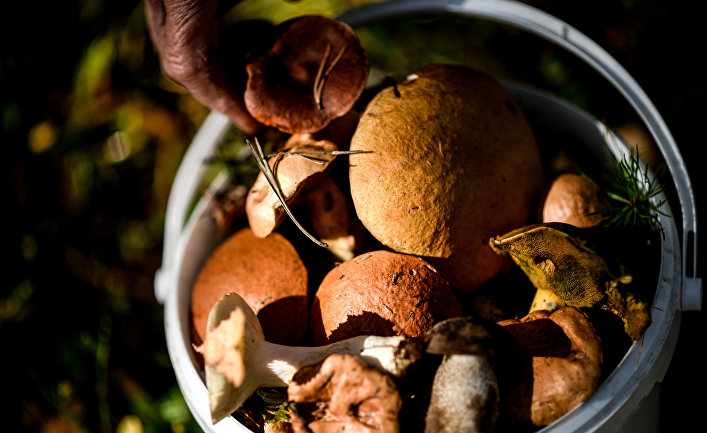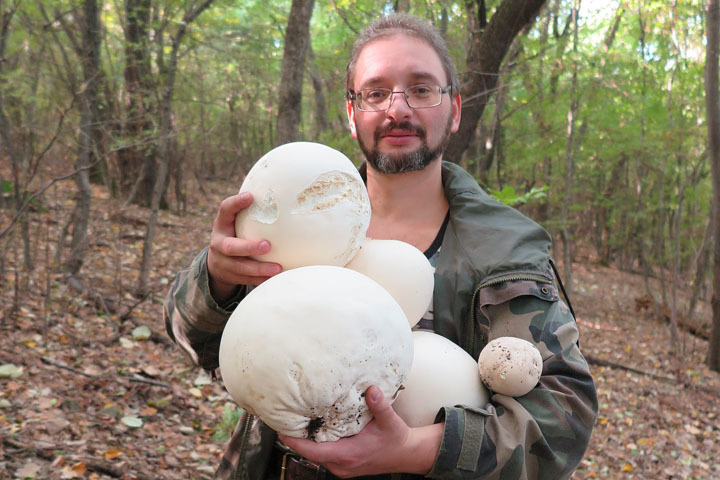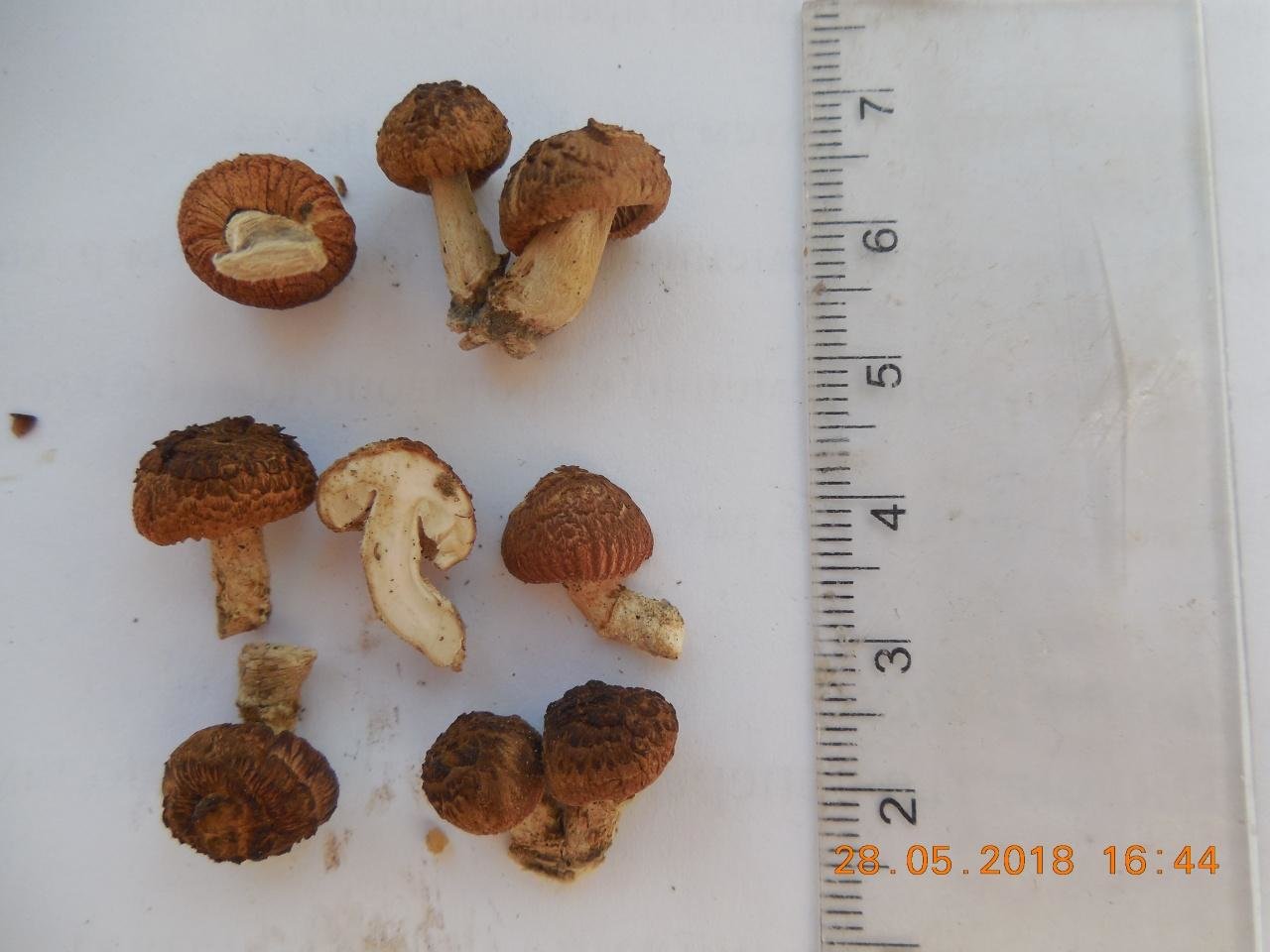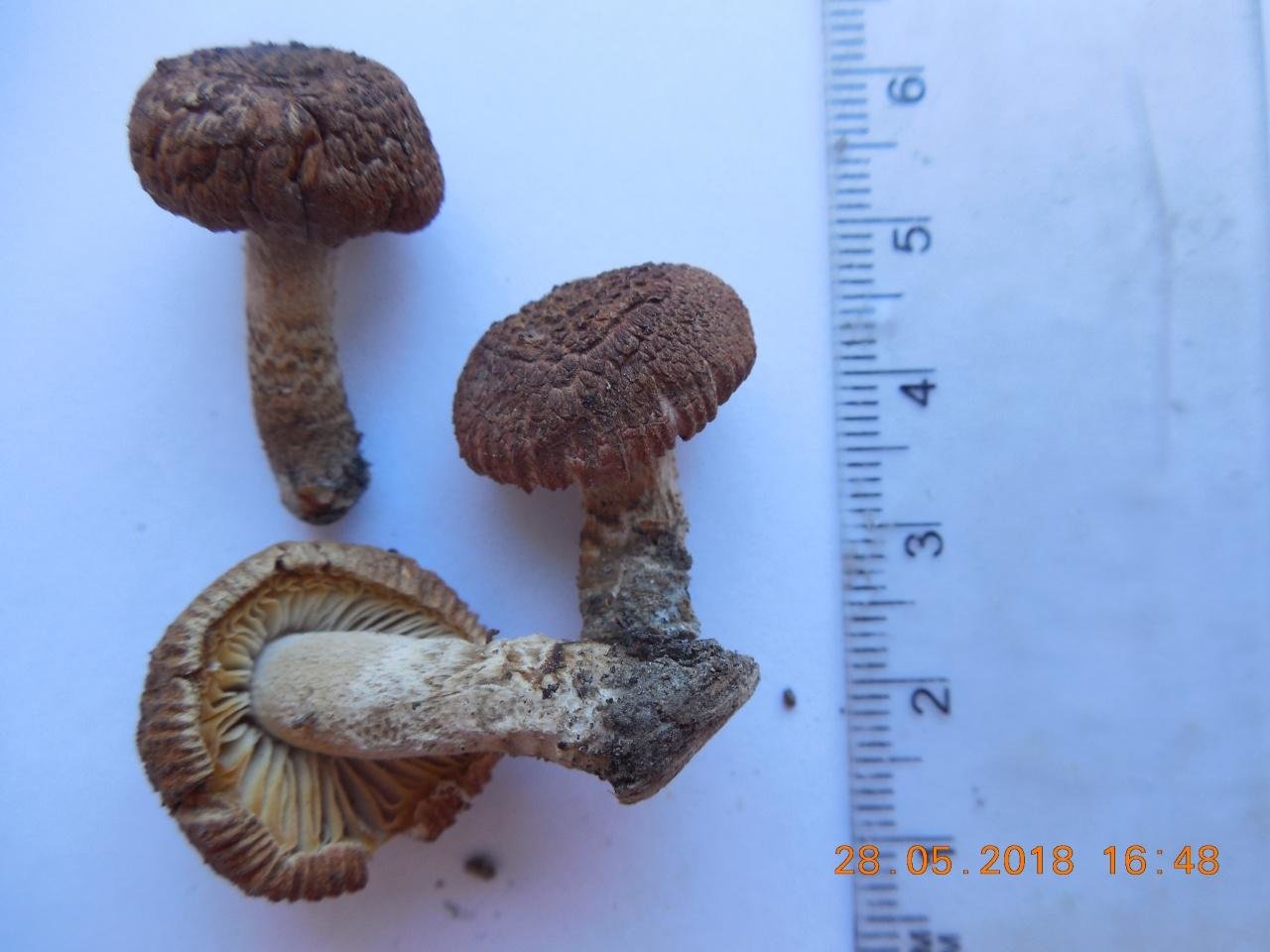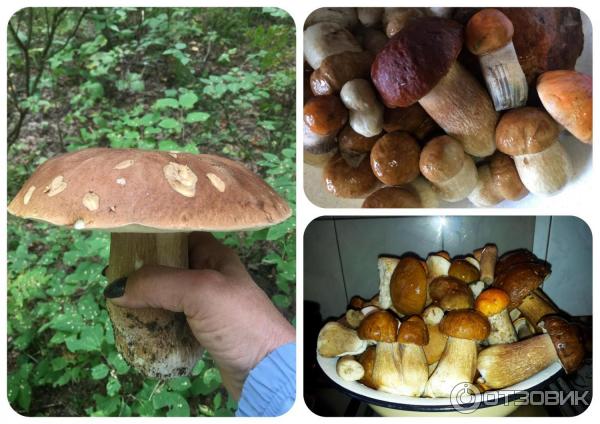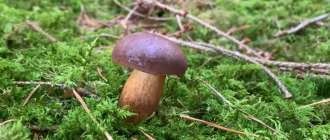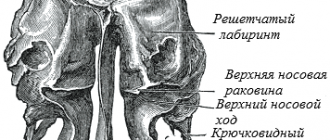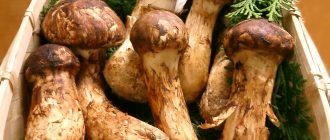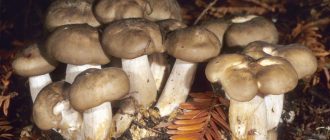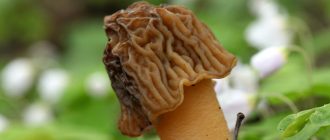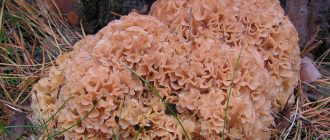Proteins - even harvested for the winter
Common squirrels (Sciurus vulgaris) occupy a special place among mammals that eat mushrooms, which not only eat them fresh, but also store them for the winter. Here the squirrel has eaten the flesh of a cap boletus (Fig. 2). The edges of the furrows left by her incisors are not yet dry, which means she was here recently. Squirrels eat about forty-five types of mushrooms, but they prefer boletus and boletus.
In years poor in seeds and nuts, the squirrel often digs in the ground since autumn, making small holes. In such a place, it is sometimes possible to find in the ground under a layer of moss and needles, round, like a hazelnut, fruit bodies of mushrooms. The hunters of the North know these mushrooms and call them "parga", "parushka". “The squirrel digs the parga,” they say. The scientific name for this mushroom is deer truffle (Elaphomyces granulatus). This squirrel mushroom smells even through a five to eight centimeter layer of earth and the same thickness of snow. The white hares (Lepus timidus) also willingly dig up the parga. However, constant food for squirrels in hungry winters is not parga, but bark, lichens, buds, and of course mushrooms harvested in autumn, more often autumn mushrooms and boletus (Fig. 3). Beginning in late August, the squirrel dries mushrooms by placing them on stumps and fallen trunks, or, more often, placing them in the forks of branches and hanging them on dry tree branches (Fig. 4). Squirrels of northern forests in mushroom years have from several dozen mushrooms to 150-300, and in the teleut squirrel of the steppe pine forests of Western Siberia, up to 1500-2000 mushrooms (Fig. 5).
But nevertheless, the animals listed above can be called our enemies only conditionally. On the contrary, hanging mushrooms with proteins promotes the proliferation of spores. I take an example from them, and prick old worthless hats on a knot higher, tubes down.

Constant companions of man
Mushrooms, like plants and animals, are constant companions of man, obligatory participants in his life and work. Apparently, even our distant ancestors, who with incredible difficulty procured food for themselves, finding mushrooms, looked at them with curiosity and tried to use them as food. And it is not difficult to assume that it took a lot of time and sacrifices in order for them to be able to separate edible mushrooms from poisonous ones.
Expanding his acquaintance with mushrooms, man was able to make them assistants in such ancient industries as baking and winemaking, and it is surprising that in these cases the properties of the smallest mushrooms that man could see through a microscope millennia later, only in the 19th century, were used!

Disputes about the appearance of mushrooms
The mushrooms were especially struck by the suddenness of their appearance. Therefore, the search for the causes of this phenomenon led ancient researchers to a wide variety of assumptions. The appearance of fungi was associated either with a lightning strike, then with the action of dew, then with the fumes of decaying organic substances, etc. And when life refuted these assumptions, the appearance of mushrooms was simply attributed to the play of nature. They also attributed divine origin to mushrooms, which greatly facilitated the task of the "researchers" of that time. The process of learning about the nature of mushrooms took a long time. In one of the first German herbalists, dating back to the 16th century, about mushrooms it was literally said: "Mushrooms are called children of the gods, because they are born without seeds, not like others."
If some talked about the divine origin of mushrooms, then their opponents attributed the mushrooms to a connection with evil spirits. In 1727, the French botanist Veillant argued that mushrooms are an invention of the devil, invented in order to disrupt the harmony of the rest of nature, to confuse and despair researchers. However, it must be said that in later times, some scientists, unable to find a scientific explanation for the phenomena of nature, attributed them to the machinations of evil spirits.

Three-phase biodegradation process
The biodegradation process, for example, of wood, is three-phase. Its first phase is carried out by a group of necrotrophic fungi that feed on the substances of dying cells. Then wood-destroying mushrooms get down to business. In Russia, there are about five hundred species, an example of which are tinder mushrooms. There are no other organisms in the world that, like wood-destroying fungi, are capable of carrying out biochemical processing of wood.
In the forests of the district, the main work on the biological decomposition of coniferous wood is produced by such species as edged and pink polypores, hair shirts - spruce and brown-violet, as well as pine sponges. Deciduous wood - birch, aspen - is processed by a different set of mushrooms: real and false tinder fungus, birch sponge, false aspen tinder fungus.
The third phase of wood biodegradation is characterized by the development of fungi - humic saprotrophs, ending long and complex processes of wood biological decomposition. Humus saprotrophs are represented by gasteromycetes (raincoats) and especially often by cap fungi, which develop in huge numbers on rotten wood and forest litter. We call them pejoratively toadstools. Yes, they cannot be eaten, but without these organisms, the final stages of biodegradation processes would be blocked.
Rodents, wild boars, deer - very fond of mushrooms
In summer and autumn, it is also not uncommon to find a mushroom, on the cap of which you can see traces of teeth - this is the work of mice and other rodents. Mushrooms are also eaten by larger animals. Boletus and aspen mushrooms are very fond of wild boars, while mice do not eat these mushrooms at all, but prefer morels, russula and boletus. The birch sponge (Piptoporus betulinus) is a delicacy for the red deer, and in the tundra, reindeer are eaten with pleasure by the deer (Pluteus cervinus). Magpies and sick moose are treated with red fly agarics, the latter, it seems, from worms. They willingly eat mushrooms and pets. But the hedgehog depicted in the children's book, with mushrooms impaled on needles, is more likely a product of folklore.

mushroom moth
(Nemapogon personellus), polypore (Scardida boletella), grain (Nemapogon granellus), and about 10 more species from the family of true moths (Tineidae). Their caterpillars readily feed on tree tinder fungi. They also do not disdain dry mushrooms if they are stored in an open or poorly (loosely) closed container (package).
So, gentlemen, mushroom pickers. It turns out that not only humans tend to eat mushrooms. If you know any other animals that feed on mushrooms, or simply live in (on) mushrooms, write to me, I will be extremely grateful.
Happy hunting, and "no slug, no worm"!

Mushroom gnats
(Mycetophilidae) - the main destroyers of cap fungi. Their long and thin white larvae with a black head inhabit the so-called "wormy" mushrooms in abundance, and thus bring a lot of disappointment to lovers of "quiet hunting". In most cases, they are the ones that teem on the breaks of the "wormy" mushrooms, making them completely unusable. As a rule, mosquitoes damage fungi in warm weather when the air temperature is above + 15 ° C. They arrive attracted by the mushroom smell. An example is the common mushroom gnat (Mycetophila fungorum), the larvae of which develop in cap mushrooms. In Heb. h. Russia is inhabited by over 50 species of mushroom mosquitoes.
Also of interest are the slug-like larvae of the genus Ceroplatus, which are found openly on the surface of fungi. Less often, large, yellow, hard-to-touch worms are found in mushrooms. it
History
At the beginning of the Paleozoic, following the Archean, era in the Cambrian period (600 million years ago) - the period of domination of algae and marine invertebrates - fungi had already sufficiently formed and existed as saprotrophs on organic substances and as parasites of plants and animals.In the Carboniferous period of the same era (265 million years ago), mushrooms flourished. In the Upper Carboniferous deposits of England, traces of fungal hyphae were found in the root cells of some fossil vascular plants, from which we can conclude that even then a complex cohabitation of fungi with plants - mycorrhiza - arose.
Proceeding from this, for some groups of fungi, the time of their branching on the common trunk of fungi development or the time of their appearance as a separate group of fungi forming can be determined more precisely. For example, the widespread and well-known cap mushrooms are mostly associated with the roots of the tree species under which they grow. Consequently, it is unlikely that they could have appeared much earlier than these higher flowering plants, which serves as an indirect confirmation of the time of the appearance of cap fungi. It can be assumed that having arisen simultaneously with higher plants, cap fungi underwent a long joint evolution with them, as a result of which the fungus and the tree turned out to be closely related in their existence.
Very ancient are
Many of the fungi are the causative agents of plant diseases.
... We call such mushrooms parasitic. It is unnatural, at first glance, to raise a voice in their defense. After all, these are parasites! But a professional ecologist must do this, no matter how unpleasant these organisms are to him as a person. The fact is that parasitic fungi select the least viable plants, "mow down" unhealthy growth.
One cannot but take into account the fact that many parasitic fungi infect insects: mosquitoes, horseflies. Such mushrooms are promising for the creation of biological products against these annoying insects.
Of course, the development of parasitic fungi on man-made forest plantations should not be allowed. And in this case, all measures to combat them are permissible. However, when it comes to natural forests, the Siberian taiga, where everything is organized according to the laws of nature, this approach is not acceptable. There are no "bad" and "good" organisms here, but there is everything that is necessary for natural systems to work efficiently and smoothly.
Unfortunately, the ecosystems of the middle taiga of the Ob region are currently experiencing significant anthropogenic pressures. This causes a restructuring of the entire structure of the mycobiota, adapting to new environmental conditions. One of the negative aspects of these processes is the depletion of the biological diversity of the region's mycobiota. The reason for this is the inability of some of the mushrooms to adapt to the newly emerging conditions. Most of these mushrooms are associated in their existence with the dark coniferous taiga. Only here you can find many rare types of mushrooms. The need to publish the Red Book of the Okrug, which includes information about rare, endangered animals, plants, and mushrooms, is absolutely ripe.

Do mushrooms come from the aquatic environment?
Fungi are usually perceived as purely terrestrial organisms. This is the deepest delusion! First, fungi, as a special group of living things, arose precisely in the aquatic environment. Secondly, any modern aquatic ecosystem necessarily includes aquatic fungi as a component.
Approximately two percent of the currently known fungi are aquatic.
For the district, on the territory of which there are many swamps, rivers, lakes, aquatic saprotrophic fungi are especially important. They develop on plant residues that come from the surrounding areas into water bodies, and cleanse the latter from dead organic matter.
That is why lakes and rivers do not resemble giant compost pits filled with leaves, dead grasses, trees. The decaying mass, the aquatic fungi themselves serve as food for fish, various invertebrates. Aquatic saprotrophic fungi also react to organic pollutants, destroying them. Unfortunately, this aspect of the ecology of aquatic fungi remains virtually unexplored.

Ability to accumulate heavy metals
Pigs are characterized by the maximum accumulation of heavy metals, russula are in second place. Porcini mushrooms, aspen mushrooms accumulate them least of all.
Not only humans, but also many animals feed on mushrooms. Many vertebrates are more or less mushroom-oriented. These are squirrels, small mouse-like rodents, birds. The latter are most likely attracted not by the mushrooms themselves, but by the larvae of insects, which they feed on, pecking at the fruiting bodies of the mushrooms. Hollow-nesting birds make their nests, as a rule, in those trees, the core of which is destroyed by fungi. Therefore, the number of such birds depends on the presence of wood-destroying fungi in the forests.
Animals carry spores of fungi, facilitating their dispersal. To attract insects, mushrooms have a number of adaptations. This is a bright color of caps, smell, fleshy consistency. In order for all these tricks of the mushrooms to have an effect, they often form fruit bodies in the form of clusters. Insects lay eggs in mushrooms, from which larvae appear, feeding on the pulp of the mushroom. So the worminess of mushrooms means that everything is normal, good in nature. There is someone to carry mushrooms, populating suitable places with them!
Few people, contemplating the bizarre lichens, which the forests of the district are so rich in, realize that they are also mushrooms, but cohabitating not with higher plants, but with algae. It is difficult to imagine the North, its economy without lichens - these extremely unpretentious organisms. However, by the will of fate, they are sensitive to environmental pollution, excessive pasture and recreational loads, fires, and therefore are good indicators of the quality of the environment. The more there are, the healthier the environment - and vice versa.
Mushrooms are a special world, where they even have their own predators. We simply do not notice them in our everyday life. Only armed with a microscope can you see these merciless killers. For catching animals, predatory fungi have a variety of devices. These are sticky buds on mycelium, to which the animal sticks, dense clusters of hyphae covered with a sticky substance, which work like fishing nets. The caught victim is quickly killed, and with the help of special hyphae, the mushroom quickly "eats" it.
But this does not exhaust the role of fungi in nature!
Full bloom
The mushrooms reached their full bloom in the Tertiary period (about 76-25 million years ago) of the Cenozoic era, in which we also live. During this period, judging by the fossil finds, all the main groups of mushrooms known today already existed.
The question of the place of fungi in the complex system of the living world cannot yet be considered finally resolved. Only further research of scientists - botanists-taxonomists, biochemists, geneticists and other scientists, armed with the latest research methods that allow studying the finest structures of the fungal cell and the peculiarities of metabolism in it, will give a final answer to this question.
Mushrooms in the ordinary mind are associated with ideas about rotting, plant diseases, in other words - with the negative aspects of the life of organisms
At the same time, the available materials indicate that mushrooms are extremely important in the life of nature.
Decomposition of organic residues, often called decay, is an extremely important process in nature. For example, in the forests of the Khanty-Mansiysk Autonomous Okrug, the bulk of the biomass - about 90 percent of plants - is processed, destroyed with the participation of bacteria, invertebrates, fungi
However, it is the fungi that are the leading group and determine all the most important characteristics of these processes.
These are naked slugs
larvae of mushroom gnats and click beetles.
Of the naked slugs (Fig. 6) that feed on fungi, the most common in our forests are representatives of the Limacidae families, for example, the large slug (Limax maximus), and the Arionidae (Arionidae), for example, Arion subfuscus. Surely other snails would also like to eat mushrooms (Fig. 7). The appearance of the damage caused by snails and slugs to fungi is very characteristic: wide, eaten pits, along the edges of which, under a magnifying glass, you can see traces of a radula (an organ of the oral apparatus). Usually also heaps of excrement and mucus left on the caps give out with the onset of day of night gluttons. Often they eat the mushroom so much that the hat becomes like a sieve, all in holes, and sometimes the bitten off one lies next to the leg (Fig. 8).

Scientific studies of mushrooms
However, the history of the study of mushrooms also knows scientific approaches to the problem of their position in the system of living nature. Back in the III century. BC about mushrooms as a kind of plants was mentioned in the works of the "father of botany", the ancient Greek scientist Theophrastus, who distinguished four stages, or kingdoms, of nature: inorganic, plants, animals, man.
The great systematist of plants and animals, the Swedish scientist Karl Linnaeus in the 18th century. finally approved the belonging of fungi to the plant kingdom, although he was inclined to classify mushrooms, along with polyps, as animals. In his major work "The System of Nature", published in 1735, Linnaeus divided all plants into 24 classes and attributed mushrooms to the last of them, in which he united under the name of secret marriage all plants that do not have flowers, that is, spore.

What made it possible to classify mushrooms as plants? First of all, their way of feeding is by absorbing nutrients from solution through the cell wall, and not by swallowing food, as in animals. In addition, mushrooms and plants were related by the presence of a rigid cell wall, reproduction by spores and unlimited growth.
More than two centuries after the time of Linnaeus, the question arose again about the legality of the inclusion of fungi in the plant kingdom. The fact is that the study of the structure of fungi using an electron microscope and the use of precise methods of biochemistry in the study of their metabolism have shown that, in addition to plant ones, fungi have a number of characteristics that are also characteristic of animals. Fungi are close to animals: complete absence of chlorophyll in cells, inability to synthesize organic matter from inorganic, the formation of urea in the process of metabolism, the presence of chitin in the cell wall. Hence the assumption arose that fungi arose even before organisms with the features of animals or plants were isolated among the primitive primary living organisms.

Relationship with other organisms
To solve the problem of the position of fungi in the system of the living world, it is important to establish their kinship with other organisms.
There was a hypothesis that fungi originated from the most ancient algae, but it was not taken into account that algae are typical photosynthetic organisms and, therefore, naturally occupy a place in the plant kingdom. On this basis, fungi with their individual features of animal organization cannot be associated with algae.
Currently, the most reasonable assumption is that fungi originated from colorless primitive unicellular flagellate organisms that live in water - flagellates, more precisely, from their ancient ancestors, who were probably among the first inhabitants of the primary reservoirs of our planet and among whom are also it was impossible to distinguish neither typical plant nor typical animal organisms
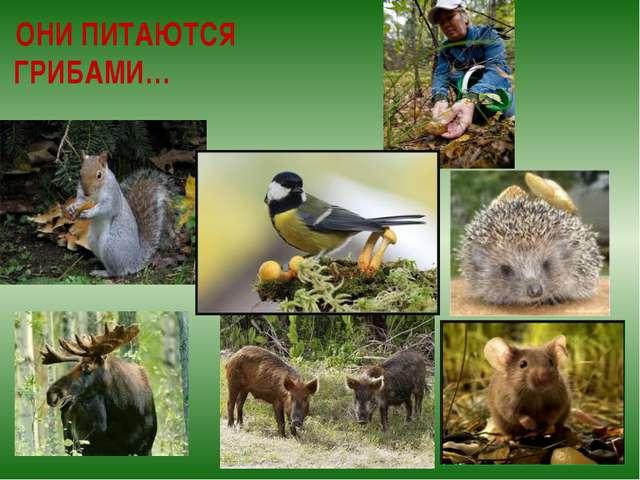
The driving force behind the biological conveyor
is the competition of fungi for the substrate. Due to this, a complete biological decomposition of wood is achieved and the maximum possible speed under these conditions
Therefore, it is so important to preserve all organisms, since each of the mushrooms was created by nature to perform certain functions.
Biological decomposition of wood is an absolutely necessary process for the normal life of a forest.
However, a person perceives the decomposition of wood as a purely undesirable process that withdraws huge raw materials from economic circulation. The Khanty-Mansiysk District is located in the middle part of the West Siberian Plain, and the rate of decomposition of wood here is one and a half times higher than in the Yamal-Nenets District, but about the same number of times lower than in the southern regions of the Tyumen Region
Accordingly, the service life of wooden structures and structures also differs.

The use of fungi for soil cleaning
Recently, wood-destroying fungi have been used for cleaning, reclamation of chemically poisoned soils. The use of mushrooms allows you to cleanse the soil from heavy metals, dioxin, DDT, naphthalene, benzopyrene. Needless to say, how urgent this problem is in the district with its high concentration of the oil-extracting industry, where oil pollution, alas, is a frequent occurrence. It seems that even now the district could put before mycologists (scientists studying mushrooms) the task of developing appropriate methods for cleaning soils from oil spills.
The role of fungi is not limited to the decomposition of plant debris. Many of them form mycorrhiza or fungal root - the root systems of plants and the mycelium of fungi grow together. All woody plants of the Siberian taiga necessarily form mycorrhiza.
Both the plant and the fungus greatly benefit from this union. The plant supplies the mushroom with carbohydrates. In turn, the fungus supplies the plant with elements of mineral nutrition, improves its water regime, protects the root systems from pathogens, etc.
Among the fungi that form mycorrhiza are well-known edible mushrooms - cep, aspen, birch, milk mushrooms, boletus, volushka. These mushrooms are specialized in the formation of mycorrhiza with certain plants, and that is why every mushroom picker looks for them in certain forests.
The Ob region is rich in mushrooms, especially in August. On sandy soils along numerous rivers and streams, a huge number of edible mushrooms appear - as they say, even a scythe. Collect taiga wealth, Siberian, and prepare it for future use for the winter. And so that the Siberian forests do not become scarce, observe simple rules - do not destroy the forest floor where mushrooms live, do not loot in the forests. Remember that mushrooms were created by nature not only for our table, they are also needed by many other organisms.
Until now, no one has estimated the stocks of edible mushrooms in the district. They are large, and all or almost all types of mushrooms traditionally used in Russia are found here.
The specific reasons for the existence of rhythms in the fruiting of mushrooms remain unclear. It is only clear that temperature, humidity of the environment and their ratio during the growing season are of great importance here. At the same time, it can be assumed that fungi also have their own internal developmental rhythms.
Most of the territory of the district undoubtedly belongs to ecologically clean areas, and here there is no question about the ecological purity of mushrooms as a food product. It is a different matter in the case of ecologically unfavorable territories. These include areas along transport communications, the vicinity of drilling sites, large settlements, where economic activity is associated with the release of pollutants into the environment. Accumulating in soils, they are subsequently accumulated in fungi, and then together with them enter our body.


